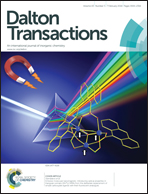Cyclic peptide marine metabolites and CuII
Abstract
Cyclic pseudo-peptides derived from marine metabolites of the genus Lissoclinum bistratum and Lissoclinum patella have attracted scientific interest in the last two decades. Their structural properties and solution dynamics have been analyzed in detail, elaborate synthetic procedures for the natural products and synthetic derivatives developed, the biosynthetic pathways studied and it now is possible to produce them biosynthetically. Initially, these macrocyclic ligands were studied due to their medicinal and pharmaceutical potential – some of the isolated cyclic pseudo-peptides show high cytotoxic and antiviral activity. A major focus in the last decade has been on their CuII coordination chemistry, as a number of studies have indicated that dinuclear CuII complexes of cyclic peptides may be involved in the ascidians’ metabolism, and this is the focus of the present review.


 Please wait while we load your content...
Please wait while we load your content...